Upon hearing the name of this type of chicken, it is easy to assume what type of chickens they are. However, you never know for sure. So, What is Whiting true blue chicken? Whiting true blue chickens are a relatively new breed developed by a poultry geneticist named Dr.
Tom Whiting. He has achieved this breed by spending more than a decade cross-breeding. Dr. Whiting crossed Ameraucana chickens with commercial lines of white leghorns. This breed comes in various colors, feather patterns, and leg colors. If you are looking for an additional color to liven your flock more, this breed can be suitable for you.
This article will cover
- Background and History of Whiting True Blue Chicken
- Breed Standard and Appearance
- Personality and Temperament
- Whiting True Blue Chicken’s Egg Laying
- Health Issues and Care
- 5 Tips for Raising Whiting True Blue Chicken
Background and History of Whiting True Blue Chicken
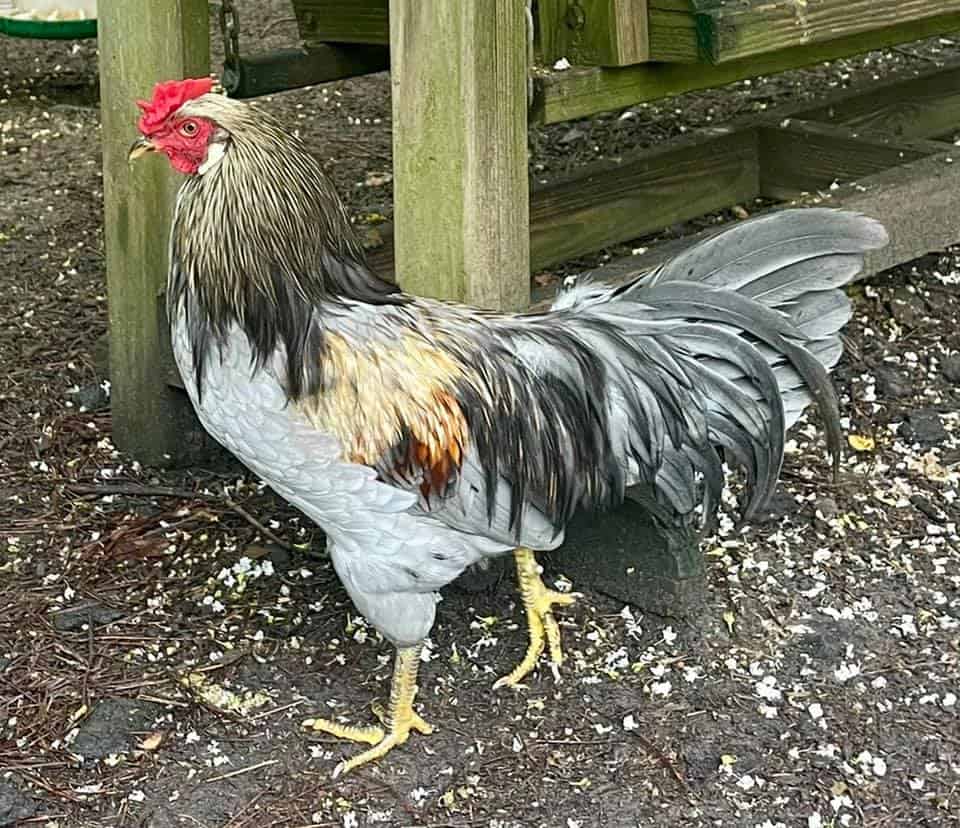
This relatively new breed was developed through the works of Dr. Whiting and apparently not his first goal in starting research. He was a fly fishing feather tying hobbyist and was from Colorado. The name Whiting true blue chicken is obviously from his surname, being the one who developed the breed.
Creating whiting true blue chicken breed was not his initial plan in mind. The idea came after the first one, which was to achieve a specific goal for his fly tying hobby.
He was initially trying to breed roosters characterized by huge hackle feathers as they will be ideal for his fly tying hobby. Along the way, the idea of producing a blue layer chicken crossed his mind, and that’s when he started working on it.
While it could sound easy, it’s most surely not. Before whiting true blue chicken has seen the light of day, it took Dr. Whiting more than ten years before being successful with his production.
The first whiting true blues was developed by crossing Araucana and Leghorn. Thus, the birth of Whiting true blue chicken. This combination is also true for Prairie bluebells and perhaps for other chickens yet to be developed.
Dr. Whiting opted in breeding the brightest blue layers to make sure every offspring carries two copies of the blue egg gene and at the same time lays 300 eggs every year, just like how a leghorn will. This way, the breed lays blue eggs and, at the same time, lays eggs in a range of average to high numbers of eggs per year. It’s hitting two birds with one stone.
One of the exciting things about breeding whiting true blue chickens is the anonymity of their hatchlings. It is always a surprise as nothing is determined when it comes to this breed of chickens.
Breed Standard and Appearance
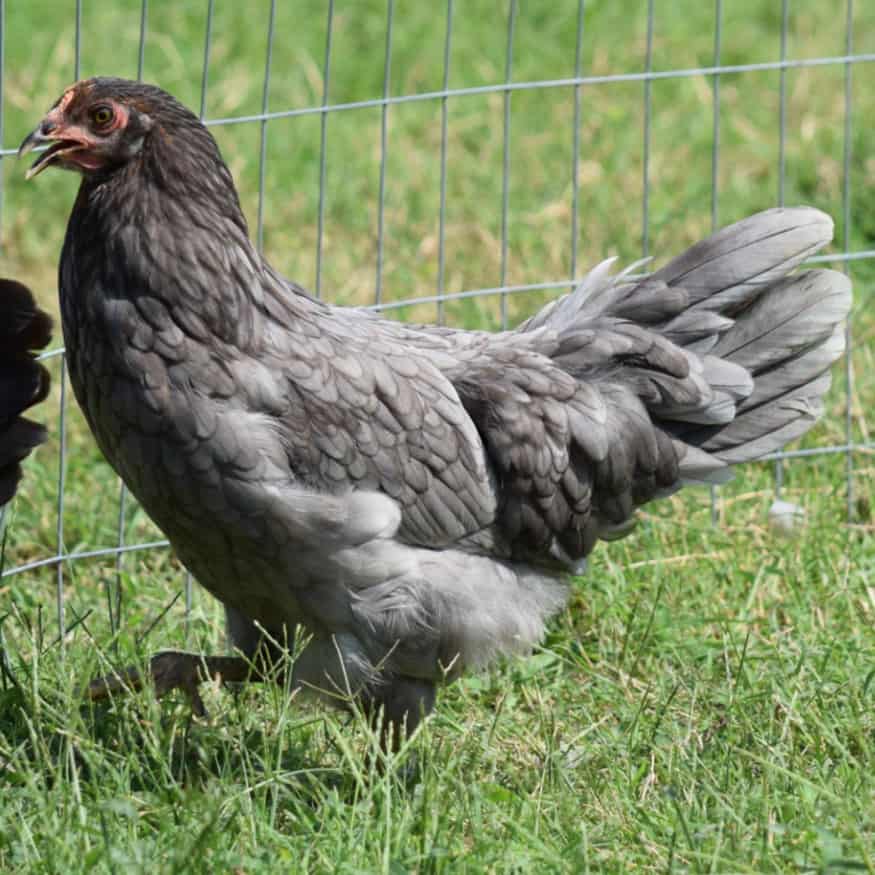
This breed of chicken came in all colors and feather patterns. They lay eggs with shades of blue. However, eggs may look the same at times but this does not equate to chicks with the same color and feather pattern. The range of feather colors is vast and eminent. One of the exciting things about this breed is people anticipate what color will hatch out.
With a blue gene, a wide range of colors can be found in this breed. The variety includes the following.
- Blue wheaten
- Blue red
- Lemon blue
- Silver blue
Whiting blue chickens’ feathers come in various color ranges as well. Their feather pattern can include:
- Solid blue
- Black
- Black-breasted red
While these chickens are produced by combining breeds, the current birds mostly contain a high percentage of the other party’s breed, namely the leghorn. This is why whiting true blue chickens can carry the egg-laying capability and frequency gene of Leghorns. This side of its ancestry allows them to produce up to 300 eggs per year.
Whiting True blue chickens usually have yellow legs. They can also have a pea comb. Sometimes, a comb shows up too because of the crossing with leghorns. In some cases, these chickens can also have beards in different sizes, and some chickens do not have beards at all.
The main goal of breeding whiting true blue chicken is to be able to produce blue eggs. However, this can face challenges such as egg size. The larger the egg, the more stretched out color is, causing it to get pale and lighter.
It can also be challenging to try and maintain the size of the eggs to avoid the color from stretching out and becoming lighter. This is one of the challenges when trying to produce the initial goal of a robin blue egg.
Personality and Temperament
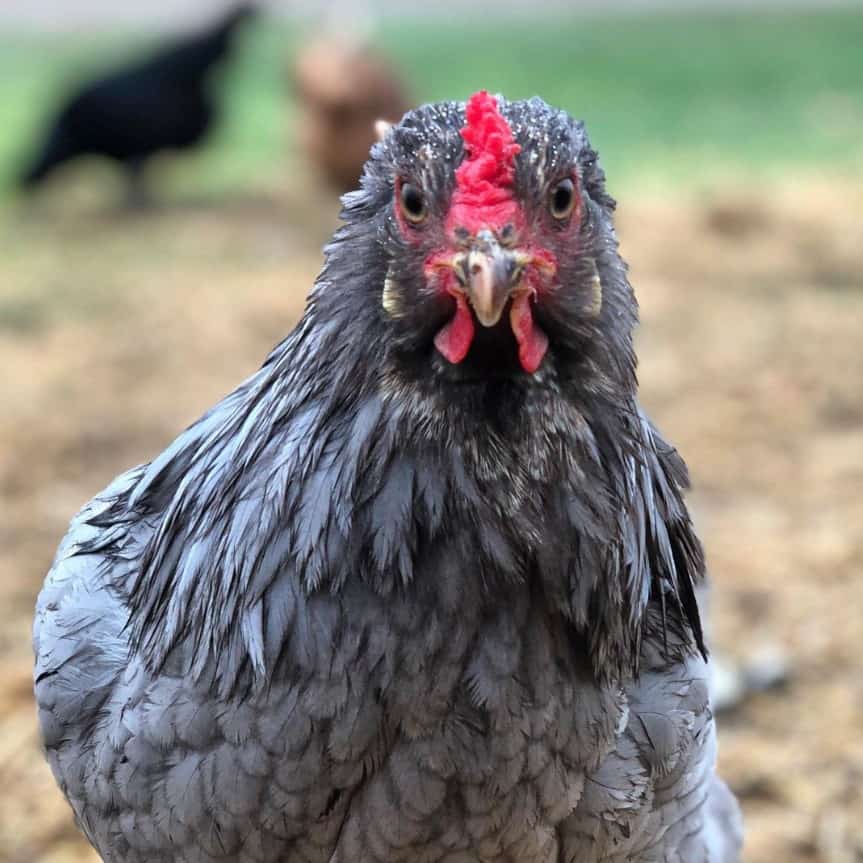
Whiting true blue chickens are inherently charismatic. They may not be the most tameable of all chickens, but that is because they value their freedom. They love to run around the space provided for them. They like free-ranging, stretching the grounds freely, wandering all over the place. These chickens are not the type to let you touch them anytime you, please.
They are not the type of pets that lets their owners hold and pet them. However, they have quite a friendly temperament. These types of chickens are non-aggressive and very active. As mentioned earlier, they are the types to move around quite a lot compared to other animals.
With their active lifestyle, we can assume how much in a day they need their food refilled. Chickens are generally easy to get thirsty. They require immediate care, especially on their water supply, as chickens are easily dehydrated.
And so, the energy levels of chickens is equally important to note because it is directly connected to the amount of food they need to consume. However, their snacks are not much of a problem as they like to peck the ground and explore places.
They may not be the typical docile chicken, but they are not as wild as well. True blue chickens have high levels of energy. They are the type to need freedom everywhere they go. They can be pretty noisy as much as other chickens are. These chickens are heat tolerant and can withstand environments with such a climate.
The number of eggs they lay is also a manifestation of their energy and relationship with the other chickens. This notes their energy levels and their capabilities as egg layers. Having this type of energy, they are an ideal flock for people who like to have a splash of color to their egg cartons.
Whiting True Blue Chicken’s Egg Laying
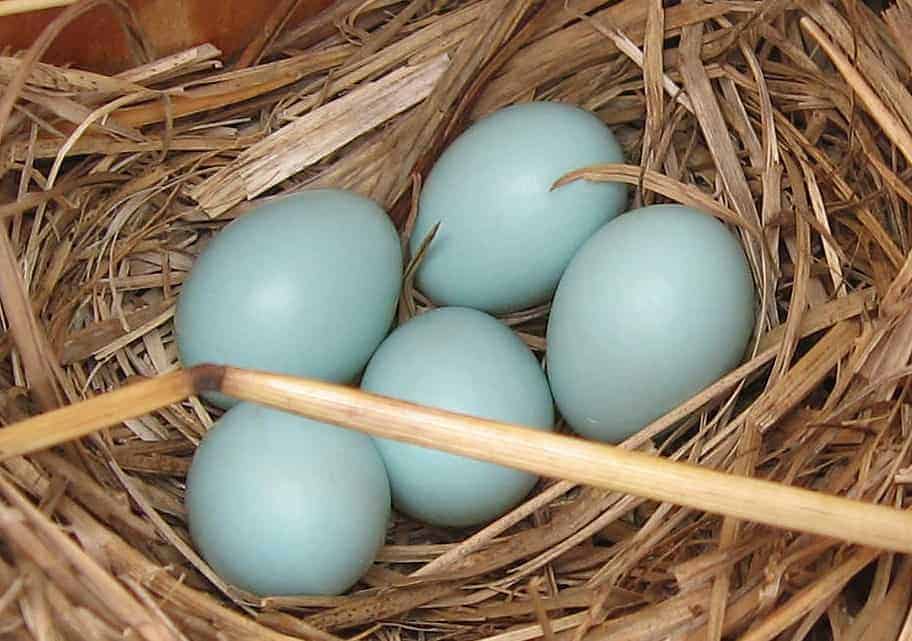
Whiting true blue chickens are quite the fascinating egg layers. They are excellent at this field, and they are not the type to take things like egg-laying lightly. Like other breeds, there is no fixed size for these chickens’ eggs. Still, you can categorize them accordingly: small, medium, large, extra-large, and others applicable.
Their eggs start at about medium sizes, and then with the proper nutrition and taking care of, it evolves and changes into a bigger one as it progresses to its largest size possible. The blue color on these eggs is made possible by a pigment called oocyanin. This pigment is a byproduct of bile production.
Unlike the brown pigment, blue pigment can go through the shell’s material. Thus, blue eggshells are blue from the inside out, unlike the brown ones whose usual interior shell color is white or dirty white.
As mentioned in the earlier parts, the gene from leghorns allows true blue chickens to produce more than the average amount of eggs per year. This breed can produce up to 300 eggs every year, exceeding the average of 250 eggs per year. Their energy, including their egg-laying vigor, is ideal for people who expect as much.
Health Issues and Care
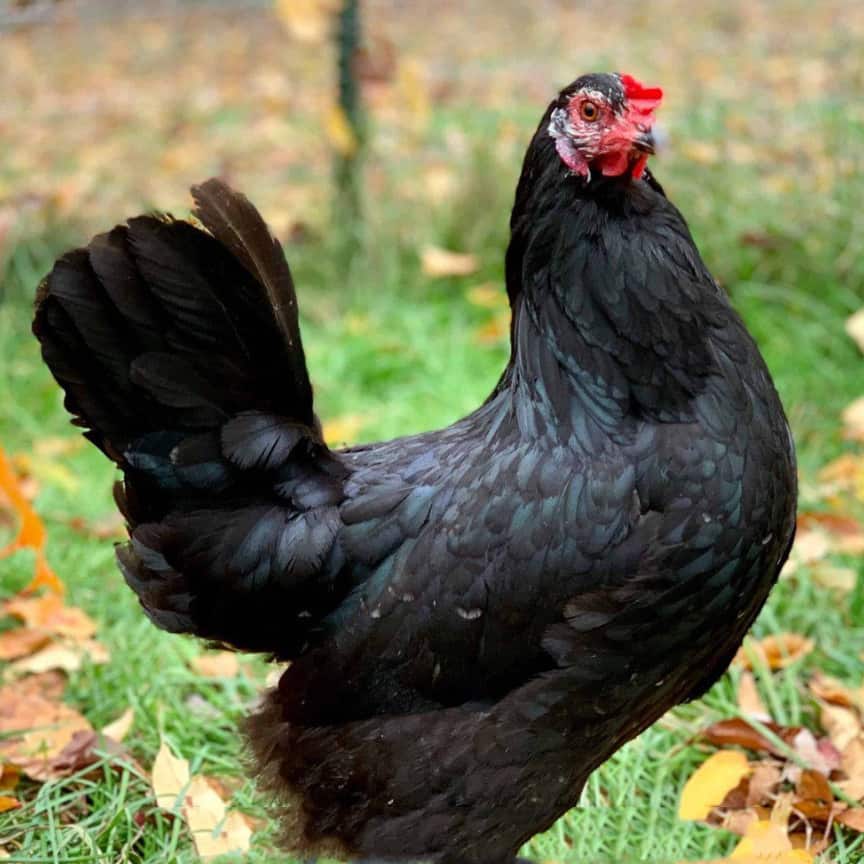
Like humans, chickens fall sick too. Despite their inherently healthy nature and lively personality, they can still catch diseases. One of the most common diseases that may affect your poultry is Common Bacterial Disease.
Of the many existing diseases, contracting an infection from a pathogen is one of the common diseases affecting poultry. The pathogen usually attacks your chicken’s body and multiplies inside your chicken’s body.
Not only are these menaces growing, but they are also contagious and can affect the other chickens in your flock. Therefore, this needs to be spotted and eliminated immediately once spotted.
First of all, your flock or one of your chickens may have contracted the disease from infected animals, most probably birds. The pathogens can include:
- Avian tuberculosis
- Avian influenza
- Avian Encephalomyelitis
- Egg Drop Syndrome (EDS)
- Infectious Coryza
- Salmonellosis

These are only some of the plausible things a chicken can be infected with. An owner that pays close attention can easily spot the differences exhibited by his flock. Although symptoms may vary from chicken to chicken, here are some of the signs that may be a red flag that something is wrong with your chicken.
- Swollen parts of the bodies like the head, combs, and wattles
- Eyes may be swollen, causing them to be shut close.
- Reduced egg production.
- Sneezing
- Loss of appetite
- Diarrhea
Your flock can catch these diseases through contaminated surfaces. It can be transmitted through contaminated water or mold. This is why it’s essential to clean your flock’s space in a set schedule or when you deem it dirty.
If you think that one of your chickens has contracted the disease, you usually have two options. One is to vaccinate the infected one (if a vaccine is available). The other one is to slaughter the infected chickens to avoid the spread of the disease.
5 Tips for Raising Whiting True Blue Chicken
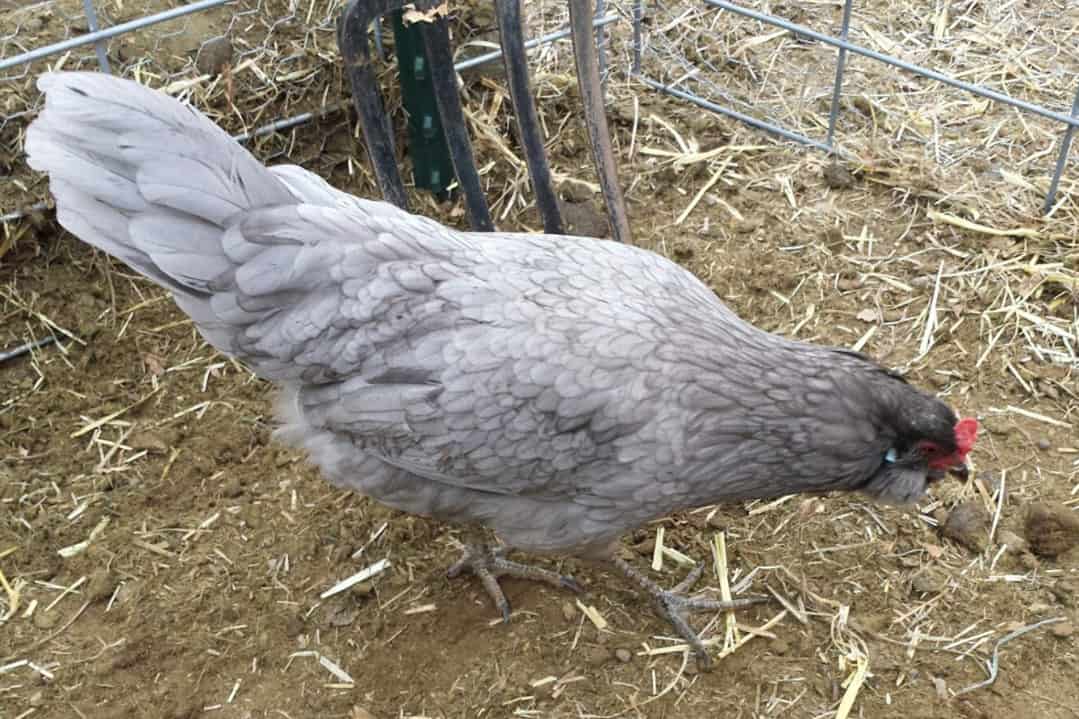
- Given this breed’s energy and temperament, it’s important to note that they need space much like any other animal. They like free-ranging, scratching, and walking around. Providing enough room for your chickens is a must-do. Along with this is ensuring that they are secured and away from predators. The goal is to provide enough space and at the same time protect them from harmful animals that can be lurking around.
- In raising Whiting true blue chickens, some things need to be done daily. Of course, this includes food and water provision. Chickens are relatively thirsty and easily dehydrated. It is best to check on their water supply several times a day. This process goes with their food supply as well.
- It’s important to note that their water should be clean. Just like humans, they also hate drinking from dirty containers and, therefore, dirty water. Even when their water container is not empty, feathers, droppings, and other dirt can end up swimming on the water provided for them. Therefore, it’s best to check now and then to make sure they are not dehydrated.
- When collecting eggs, make sure to clean the nests too. It’s okay to leave one or two eggs as it would not dissuade hens from adding some more. However, it’s essential to know that hens are more attracted to lay eggs in an empty nesting place. As much as possible, when collecting eggs, empty the space and remove some significant dirt.
- Spend time with your flock. Taking care of Whiting true blue chicken requires attention and spending time on them too. It’s good to spend some time observing them. This way, you will be notified when something is not right. When you are used to spending time with them, it’s easy to spot issues, if there are any.
Summary
The Whiting true blue chicken breed has been a challenging journey for poultry geneticist Dr. Whiting. However, he proved the process worth it as it is taken by the industry very well today.
Not only that, it has become a steady and excellent breed that people are curious about. While most often can mistake them as Americauna, Araucanas, or easter eggers, they are not! They are a breed of their own.
Their unique blue eggs are not everything about this chicken. There’s more to them than just their blue eggs! They also have varieties of colors and strong personalities. Their ability to survive in hot temperatures is also remarkable about this chicken breed.
Their good disposition makes them good friends and enjoyable companions. Whiting thru blu chickens are excellent egg layers and their hens are not likely to set. The healthier a true blue chicken is, the larger their eggs can be!
Whiting true blue chickens are interesting chickens that lay even more interesting eggs. Having unique colors inside egg cartons has been an exciting experience in the market. Raising and taking care of these creatures may take time, effort, and money, but the product is worth spending time and effort for.
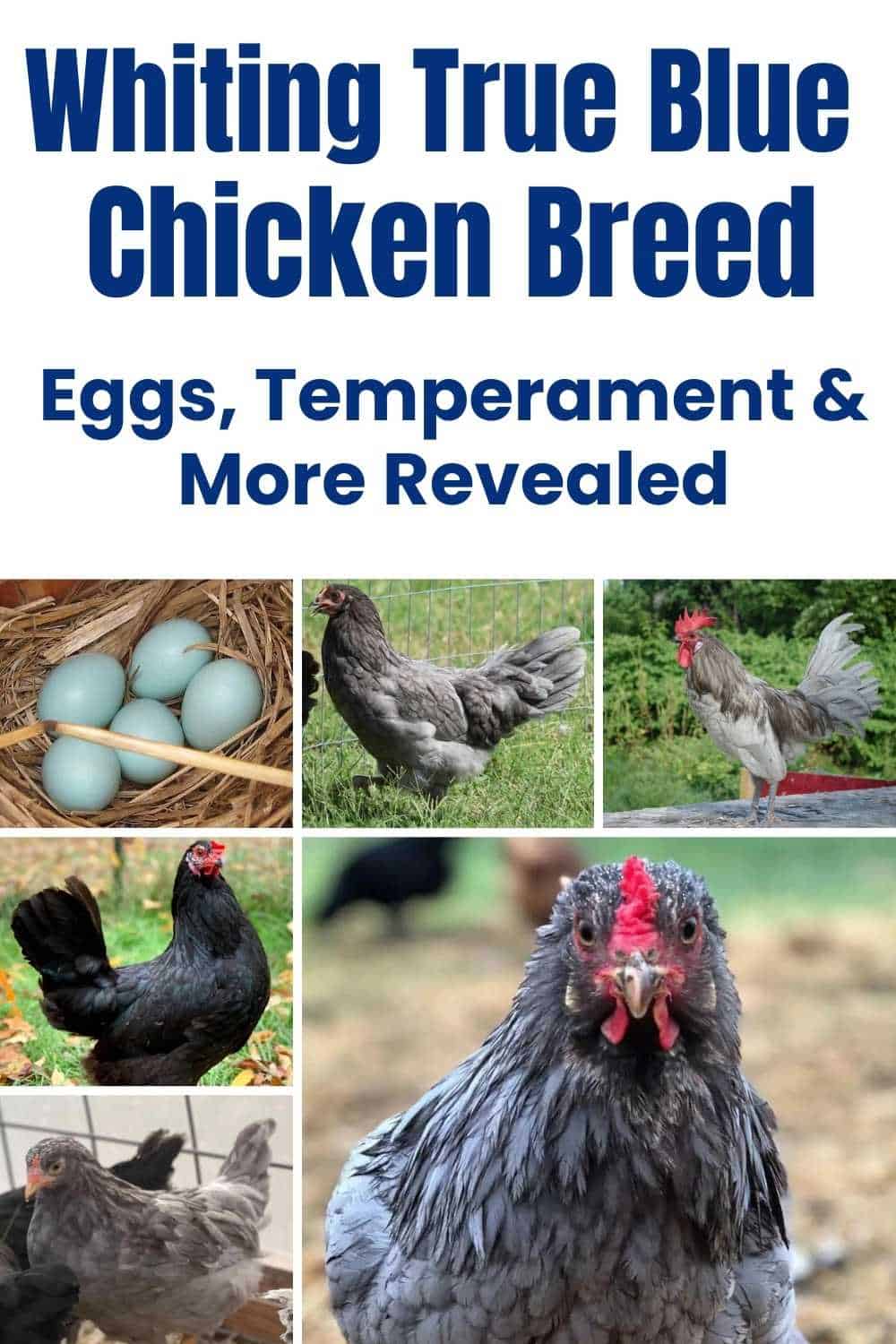

Joseph Hudson has been raising chickens for over 15 years. In 2018, he completed the Agriculture & Natural Resources program at Mt. San Antonio College. He currently raises over 1400 chickens on his 7.5-hectare farm. He keeps sharing his experience on raising healthy and happy chickens on Chicken Scratch The Foundry.
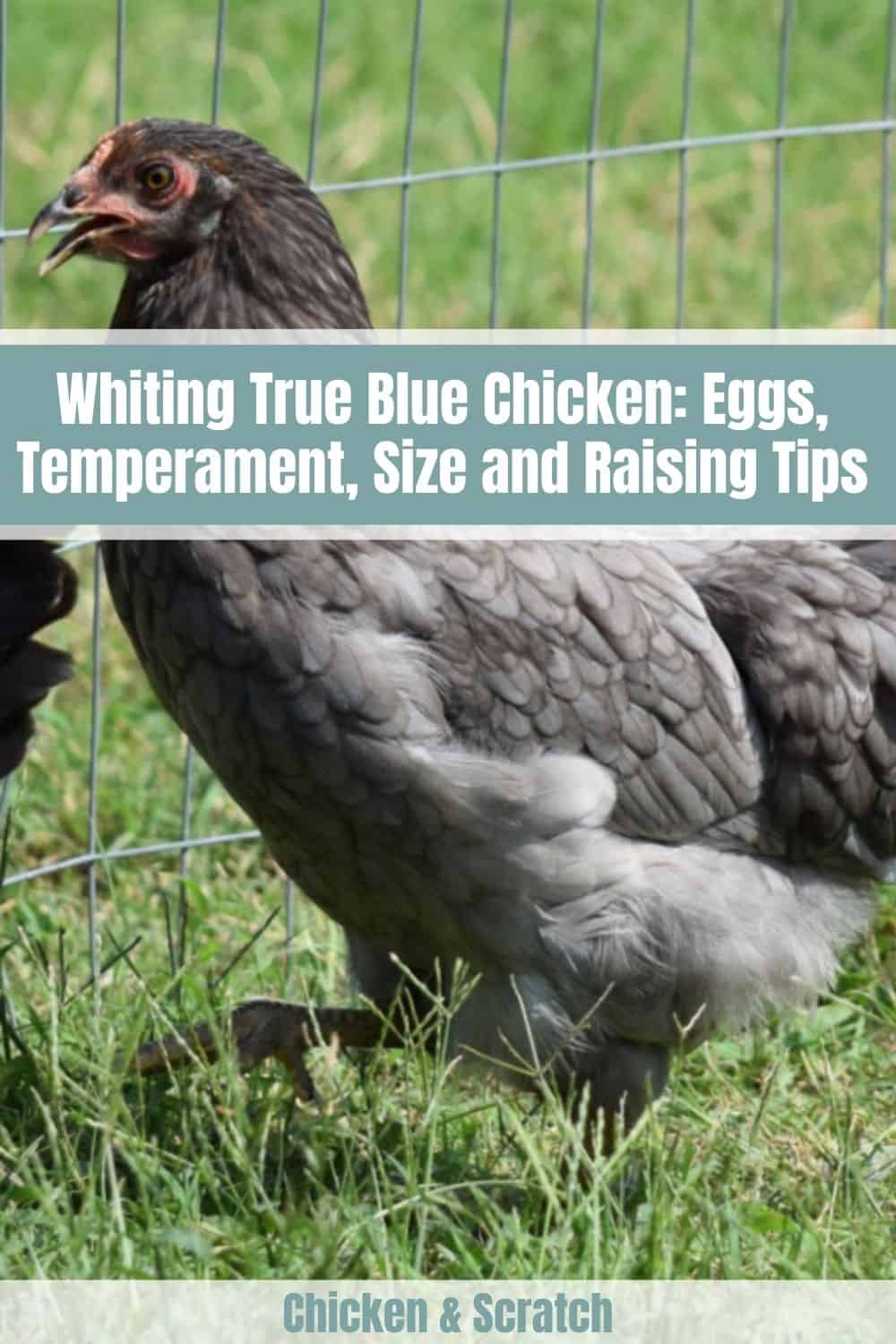







While this is informative I need to know WHAT they eat … Surely not just pellets … And HOW TO CLEAN THEIR ENCLOSURE and WHAT TO PUT IN THEIR HOUSE … I am renting on a property that has 5 of these specific chickens and the run and house are FILTHY and 1 of chickens has almost NO FEATHERS … PLEASE HELP ME HELP THEM …
In addition to pellets and scratch, I give my girls red cabbage, sliced thin, so everyone gets a fair share . I give grapes, iceberg lettuce, and of course watermelon .
I give them all my scraps of food compost, as well as ask neighbors to contribute to the compost pile, so the girls can eventually go through the pile. I do two piles, made out of 4 pallets tied together with bailing wire. So it is a 4×4 box. The girls are allowed to jump on top, occasionally. I will now place scratch on top, so they get treats, and poop in the box. I also place all the duff, from their pen and house, in the compost cube. I purchased several bales of hay to place in their house. I constantly place new slices of hay after I grab their coop poop,aka the “golden nuggets “ that goes into the compost.
Then water it, to keep the compost active. The worms and insects will need to escape the moisture, then the chicks get to wait at the bottom and dig dig dig!
I rotate my compost boxes, in the garden every year . My chickens are working for me , for the garden.
The girls can’t get into my garden, unless I allow them, because they will eat the greens! So I grow enough for them too, in theory.
Also, I have a friend that has a gardener business, so I beg for their composts, if they happen to be in the area , and I’m thinking of helping out just to score the green free weeds and duff . Think kids with a lawn mower business and such .
As far as a chick getting hen pecked, isolate her and feed her separately, until she is full of feathers again . I had received 6 chickens from two different flocks the same day. They were all troubled hens in their former houses but at the new location, my house , they were no longer in a tiff, and all naughty girls were intergrated and had no problems at all . I had to bath them, and my Easter egger grew back her feathers . So I’m guessing, she had a mite problem . Check for mites! I drown them in a 15 minutes bath three times a week , until they and the nits are gone.
In summer I dig dirt bath holes for them as a stimulus activity.
And make sure they have plenty of branches for the flock to perch on. We get them for free cause I am friends with peoples whom have chainsaws and tree businesses. 🙂